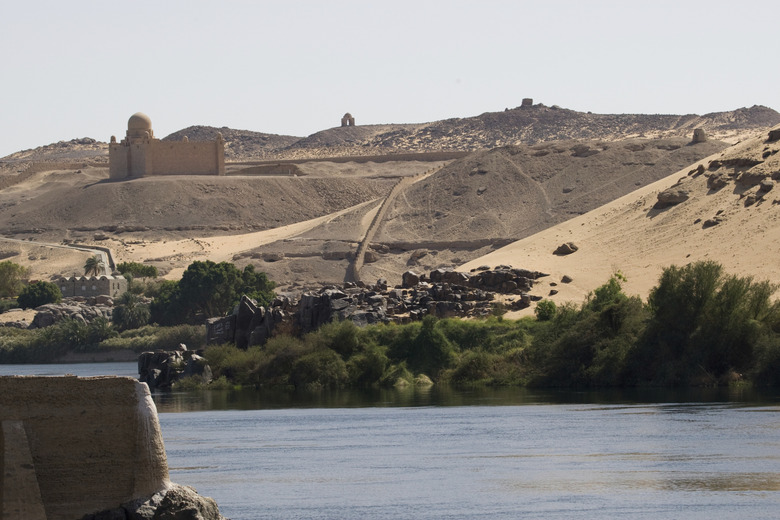Interesting Facts About Streams & Rivers
Rivers and streams are amazing geological and geographic features. Not only do they provide humans with sources of food and water, they are also capable of effecting massive changes upon the Earth's surface in the form of valleys and canyons formed by erosion.
Because they can flow for millions of years, it's no wonder that they are remarkably powerful and intriguing.
How Rivers Are Formed
How Rivers Are Formed
All rivers and streams facts start with the basics: rivers start at a high point, such as a mountain, and flow downward. Because rivers flow from high to low, they can flow both north-to-south as well as south-to-north. Rivers can also spring up when a lake overflows, and the water moves down to a lower elevation.
As a river flows, smaller bodies of water, called tributaries, add to the volume and speed of the water. Because of this, a river is the smallest at its origin point and has the most volume by the time it reaches its end. The end point is called the mouth, and it is often found near larger bodies of water, such as an ocean or sea.
Oftentimes, those "in between" points where saltwater and freshwater mix become special and specific ecosystems for organisms that can thrive in both types of water.
Fun Facts About Rivers: World Records
Fun Facts About Rivers: World Records
The longest river in the world is officially the Nile, which is 4,145 miles (6,671 km) long. It originates at Lake Victoria in central Africa and its mouth empties into the Mediterranean Sea.
There is some controversy about the title of longest river, however. The Amazon river in South America has many different mouths, so its exact end is not agreed upon. The most common measurement has the Amazon at 2,300 miles (3,700 km), but some have asserted that it might be as long as 4,195 miles (6,750 km).
However, because it has so many mouths, the Amazon is by far the largest river as far as volume goes. Up to 20 percent of all freshwater discharge into the oceans comes from the Amazon. The Amazon also holds the record for the widest river in the world with its widest point at ~6.8 miles wide.
Fun Facts About Rivers and Humans
Fun Facts About Rivers and Humans
Not only do rivers supply food in the form of fish and other aquatic creatures, they also help humans in other ways. According to some sources, up to 65 percent of drinking water comes from rivers.
Rivers also help produce electricity. Hydroelectric dams have been used on rivers in the United States since 1885, and today such dams are used to produce up to 12 percent of electricity used in the United States.
Other fun facts about rivers is that they're literally fun. They're a common source of entertainment, with plenty of whitewater rafting and swimming locations all over the United States and the world.
In other parts of the world, rivers provide key bathing, washing, and hygienic opportunities to the people who live on riverbanks. This was also especially important throughout human history when running water hadn't reached the wide population it's reached now.
The Power of Rivers and Streams Facts
The Power of Rivers and Streams Facts
Rivers and streams facts: they're among the most powerful forces on Earth. The currents in rivers are strong enough to pick up and move items as large as cars. This is what makes it especially great at generating electricity.
Because the water is always in motion, it is constantly carving away at the land over which it flows. The continuous erosion of the land can create valleys and canyons. In fact, the Grand Canyon was created by the flow of the Colorado River over the course of 70 million years.
References
- Enchanted Learning: Introduction to Rivers
- Guinness World Records: Longest River
- Extreme Science: World's Greatest River: The Amazon
- American Rivers: 5 Things You May Not Know About Rivers
- Alternative Energy: Hydroelectric Power
- History.com: How Old is the Grand Canyon? That Depends, Scientists Say
- PHYS.org: What Is the World's Widest River?
Cite This Article
MLA
Michelle, Meg. "Interesting Facts About Streams & Rivers" sciencing.com, https://www.sciencing.com/interesting-streams-rivers-7451728/. 31 May 2019.
APA
Michelle, Meg. (2019, May 31). Interesting Facts About Streams & Rivers. sciencing.com. Retrieved from https://www.sciencing.com/interesting-streams-rivers-7451728/
Chicago
Michelle, Meg. Interesting Facts About Streams & Rivers last modified March 24, 2022. https://www.sciencing.com/interesting-streams-rivers-7451728/
